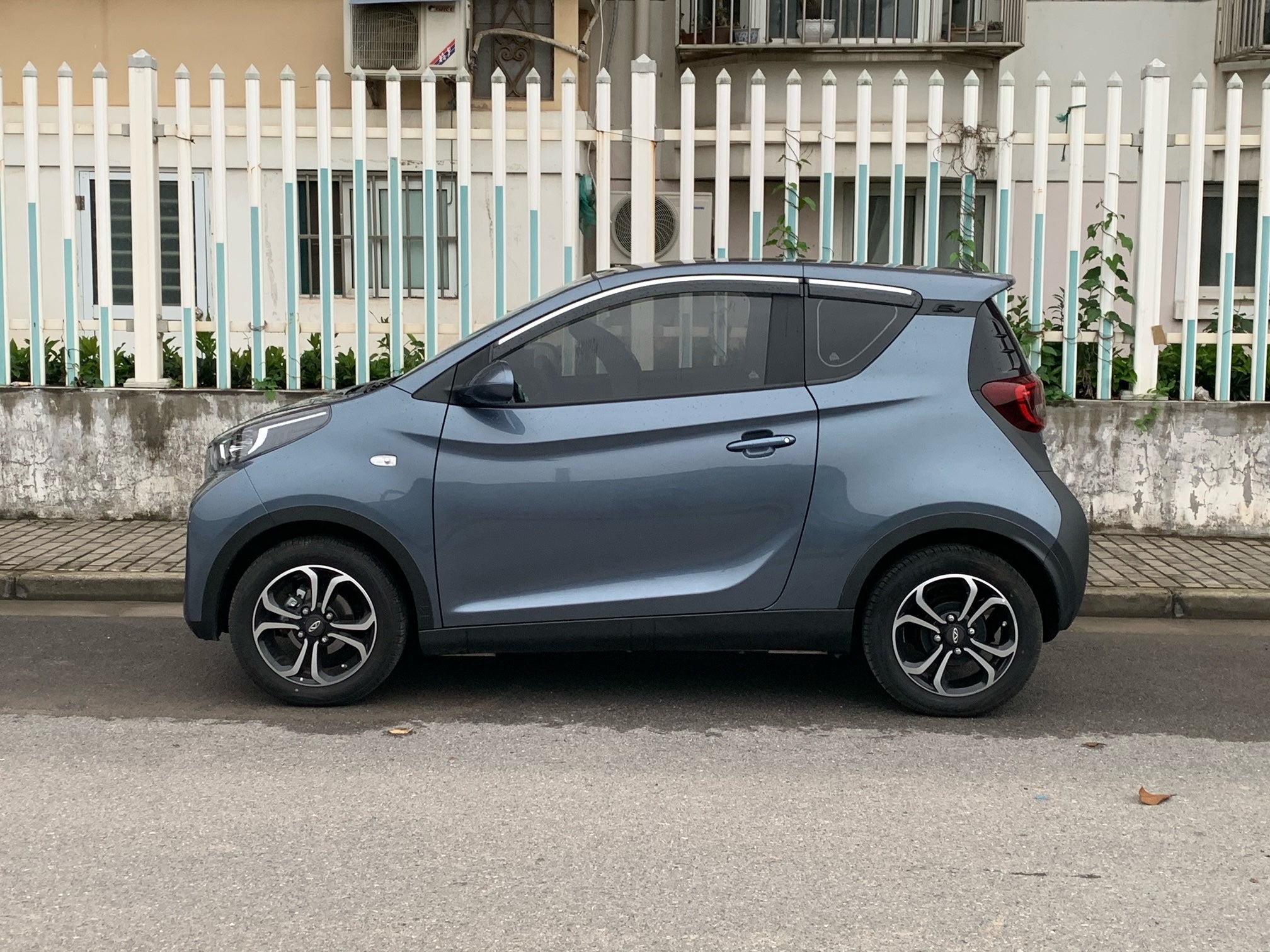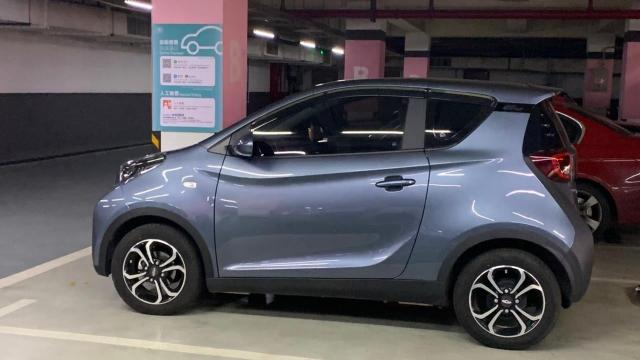Electric car buying Stateside has become a relatively mundane and normal process, down to the haggling, “extended warranties” on components you don’t even have, or just the general miasma of stepping foot into a dealer. Overseas, the experience can be wildly different, as this week’s featured owner, Seth, explained to me from Shanghai.
Welcome to EV Ownership Stories! Every week, we’ll be posting an interview with an owner of an electric vehicle. We’re here to show that people have been living with EVs for longer than you’d think, in stranger places than you’d imagine. If you’d like to be featured, instructions are at the bottom of the article.

2021 Chery eQ1
What car do you own?
2021 Chery eQ1
Where do you live with it?
Shanghai, China
How do you charge it?
Charged on a 240v wall mounted charger in my community or at a charging station in a parking garage. I usually can get around 300km between charges (without using the AC). Although I haven’t used it, this car also has a 440v fast charge connection.
How was buying it?
Buying a car in China as a foreigner is quite the process. I chose to purchase a small ev to get a Shanghai “green plate”, which came at no cost. Getting a green plate in Shanghai requires making sure you are a legal resident, you pay taxes, and you have a good driving record, not to mention you can only have 1 green plate… Once approved for the licence plate, it was just a matter of ordering and paying for the car, which I then took delivery of.
Seth lives in Shanghai, China, and drives a Chinese-market 2021 Chery eQ1. The eQ1 launched in 2016, and had a base price at launch of 49,800 yuan, a scant $7,240 USD ($9,286). It is powered by a single 40 HP electric motor driving the rear wheels that accelerates the little hatch to a top speed of around 97 km/h. The 2019 updated model has a 38 kWh battery pack that gives it over 290 km of range, which is incredibly solid for a car closer to the Changli side of the spectrum than the Tesla price bracket.
Seth charges his eQ1 at a charger installed near his parking garage, or on a 240V wall mounted charger inside his garage. He mentioned that as China pivots heavily towards EV adoption, many new parking garages for modern apartments come built with chargers, and the Chery will be able to take full advantage. It comes with the capability for 440V fast charging. Seth, however, is able to fully charge it on 240V in under a night or a workday, and with 290 km of range, he generally finds that plenty.
The purchasing experience was a rather odd one because of Shanghai’s anti-congestion strategies. Licence plates in the metropolis are divided by colour. Blue plates are paid plates. Blue C plates allow suburban travel available cheaply, but preclude drivers from entering the city – a non-starter for Seth. Blue A and B plates, however, can drive anywhere. Instead of telling vehicle owners to get in line at the DMV and take a number, the city government auctions them off in limited quantities, to help reduce the potential for congestion in the city centre. This presents a problem for any would-be drivers: Demand vastly outstrips supply. Unlimited-access blue plates sell, on average, for around $14,000 USD ($17,956). Seth personally knows drivers who waited months to win a semi-affordable plate, with their newly-purchased vehicles collecting dust until they can get them licensed.
This is clearly an unenjoyable — and expensive — process. The alternative is the green plate. Green plates are completely free and are theoretically unlimited in quantity, but the government heavily restricts access to owners based on two metrics, to keep the overall issuance numbers low. First, the owners need to have clean driving records, and each driver can only have one green-plated vehicle. Second, the car must meet a narrow (and constantly changing) set of requirements. The general underlying principle remains constant, that they are for EVs and hybrids only.
At the time Seth bought his Chery six months ago, it met the green plate requirements. (Shanghai has since removed micro-EVs like the eQ1 from eligibility, as they were so cheap and plentiful it was causing congestion.) He had shopped for other, larger EVs, but pricing and availability kept him from being able to get one he wanted.
With this in mind, Seth shopped the surprisingly robust Chinese micro-EV market, cross-shopping the eQ1 with the Ola White Cat and the Wuling MINI, among others, before finally settling on the eQ1 due to its green-plate eligibility and a better sales experience.
He’s been pleased overall with the experience. As he put it,
To be honest, the car is simple and is what I expected for the price I paid. In some ways it reminds me of my 1994 GMC Sonoma I had in high school, which was also a base model.

He praised its lightweight nature and surprisingly roomy interior (his entire family fits inside!) and mentioned that on the tight streets of Shanghai, it’s extremely easy to drive. It has some unfortunate quirks — the USB ports are finicky and disconnect from his phone frequently, and it has no glovebox — but overall, he spoke highly of the car. Additionally, Chery has given him a lifetime warranty on the battery, so he gets it inspected every six months at no cost.
As an aside, I am absolutely smitten with this car. It makes me yearn for a future where the Toyota iQ (or its hot-hatch Aston brethren, the Cygnet) was an EV. But alas, it was not, and Chery doesn’t sell cars stateside, so the only way us Yanks are getting our hands on one of these is by moving abroad or waiting 25 years for it to become import-eligible. In the meantime, Seth can enjoy wheeling around in his micro-hatch through the tight streets of Shanghai, and get a truly unique experience doing it. Thank you so much for sharing, Seth, it was fascinating to get to research and learn about such a wildly different market and how it’s adopted EVs!
